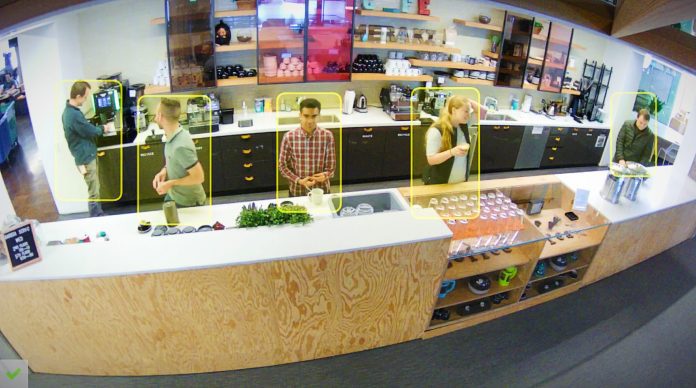Artificial intelligence is reshaping how businesses view and use their workspaces. While employees have begun returning on-site, concerns about health and safety remain high. As a result, real-time workspace-utilization insights are mission critical. With a data-driven picture of how people are using office spaces, business leaders know more about which strategies work and which ones need adjustments.

Office-space utilization-planning has always been complex, and a pain point for many facilities managers. However, the pandemic and move to hybrid work has magnified the importance and value of understanding how people use office space so enterprises can optimize this valuable real estate.
Elevator occupancy detection, for example, has shifted from a once interesting data point to information that c-level executives can factor into decisions about returning to the office. This level of visibility has put smart-building technology center stage; as a technology leader, you are equipping facilities teams to use AI to analyze data and accelerate decisions.
Here is a look at three ways you can empower facilities professionals with AI, enabling them to transform traditional office spaces into safe, healthy environments where returning employees create and delight in productive, collaborative experiences.
AI becomes user-friendly
While the adoption of AI-based systems has been growing for several years, the pandemic accelerated deployment of smart devices as IT leaders addressed myriad challenges. Previously, managers often questioned whether they had the expertise and resources needed to deploy AI technologies. After all, it was only a short time ago when AI required specialized data scientists and technical know-how.
Today, easy-to-use tools make AI technologies accessible to facilities professionals, enabling organizations to quickly pull together actionable insights from connected devices. That’s vital, given the deluge of data systems – ranging from access control to HVAC – generate. Looking to 2022, more companies will have access to highly desired AI-generated insights like real-time occupation-detection visibility and room air-quality monitoring.
Cameras go beyond security
Smart cameras monitor building and floor movements at doors, hallways, and other areas, then use built-in video analytics to draw a picture of how busy these office spaces are (or are not). This enables building facilities professionals to identify high-traffic areas and adapt workspaces to better meet office users’ needs.
Organizations can accomplish this by rescheduling security staff around peak hours or increasing cleaning protocols. In addition, smart cameras and sensors, use machine-learning-based analytics so facilities teams can analyze and identify office hot spots and dead zones, as well as high-traffic areas, ranging from hallways to elevators.
The connecting thread
The power of AI is its ability to connect several disparate and complex elements and make them accessible. With the convergence of smart cameras, IoT sensors and access points, enterprises gain real-time visibility and data into occupancy patterns and user behaviors such as social distancing monitoring and mask detection.
This provides a safe hybrid work experience. With increased visibility into building and desk occupancy levels, businesses become more agile and can adapt to changing needs more quickly to create safe and productive environments.
Individual “quiet zones” transform into collaboration hubs where team members can huddle and brainstorm. Smart HVAC systems monitor and maintain healthy indoor air quality levels in meeting rooms and desk spaces, alerting maintenance experts if problems arise.
Office of the future
As more organizations embrace hybrid workforces, digital leaders are leveraging AI and smart technology to save time and money, plus attract and retain top talent. Leading commercial real estate company Colliers, for one pivoted its smart facilities strategy from a focus on efficiency into an occupancy analytics platform that ensured a safe return to the office for its teams.
In less than three weeks–across 29 offices in Europe and 37 offices across North America, Latin America, and Asia Pacific–Colliers implemented an analytics platform with near-instantaneous data intelligence on space occupancy and workforce patterns.
The results? Actionable insights on employee safety that informed smarter facilities management, such as closing certain spaces in anticipation of quieter days and adjusting cleaning rotations for high-traffic areas and alerts to on-site employees if too many people gathered in one area.
Using smart cameras, sensors and access points equipped with built-in analytics powered by AI, you and your IT team can partner with facilities professionals to create safe spaces that promote productivity, creativity, and collaboration across your enterprise.
About the author
Andreas Nordgren is leading the Camera Intelligence Product Management team at Cisco Meraki. He was formerly CEO of the computer vision start-up Modcam that was acquired by Meraki in 2020. Previously, Andreas held several leadership roles in Europe and Asia at Sony Mobile to bring new technology solutions to market.

